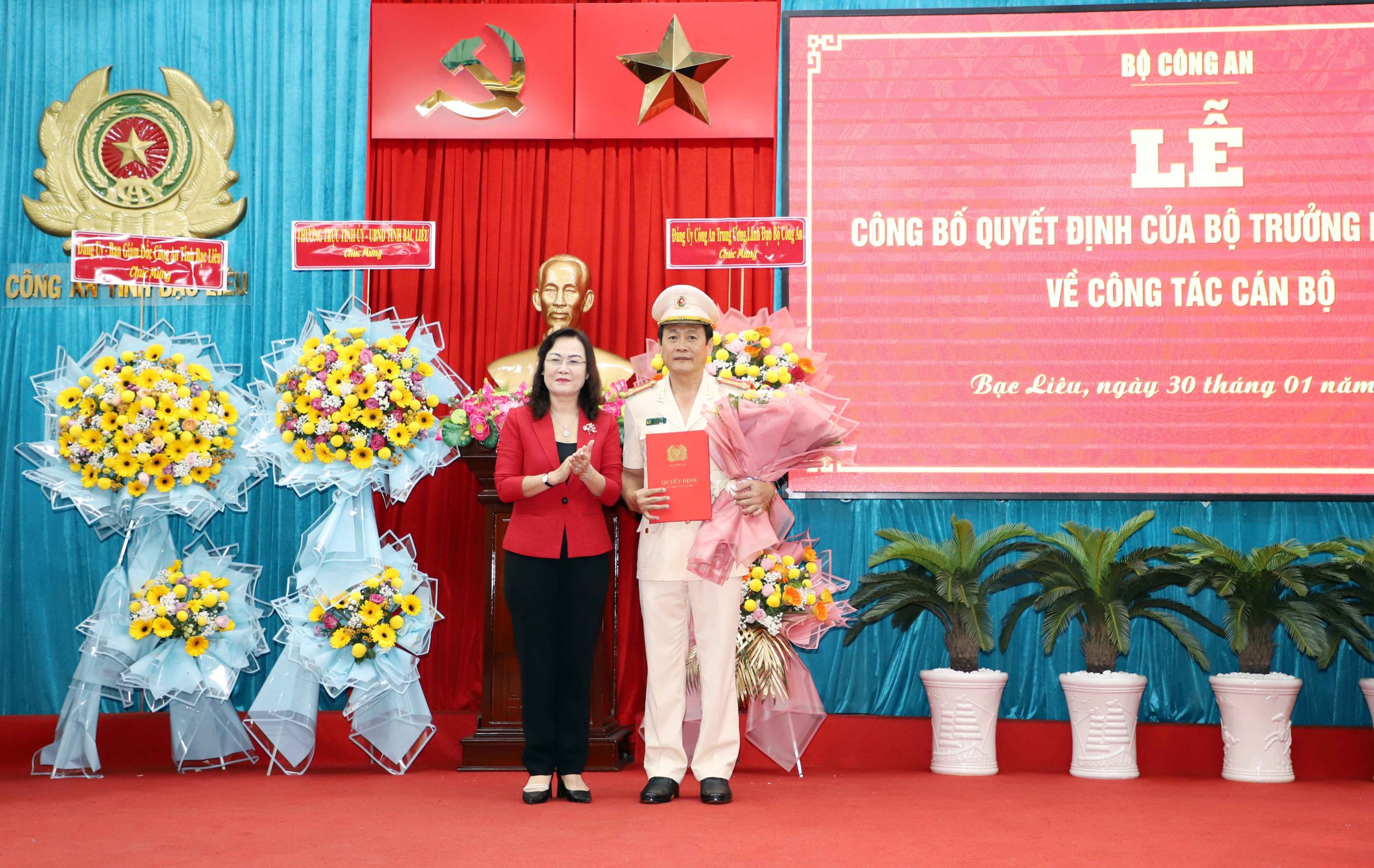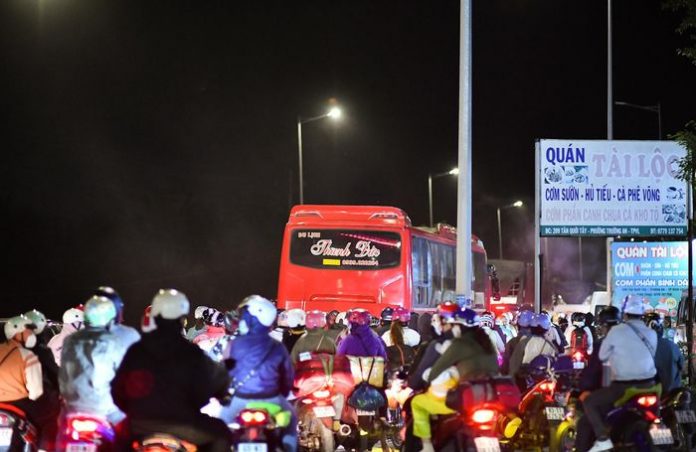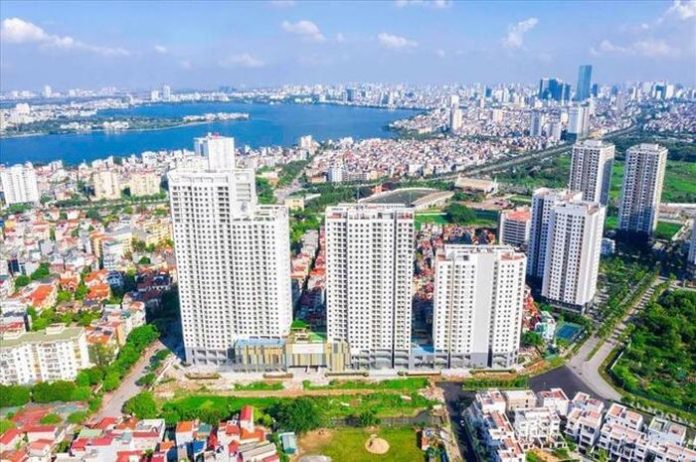Trân trọng giới thiệu tới quý độc giả Công bố quốc tế lĩnh vực môi trường số 04-2023 với những nội dung chính như sau:
Về quản lý môi trường
– Đặc điểm cấu trúc và các yếu tố ảnh hưởng của mạng lưới tương quan không gian phát thải carbon của Trung Quốc: Một nghiên cứu dựa trên kích thước của sự tích tụ đô thị
– Những thay đổi về mô hình thời gian và phân bố không gian của các chất gây ô nhiễm môi trường ở 8 quốc gia châu Á do đại dịch COVID-19
– Tác động của ô nhiễm không khí đối với tỷ lệ mắc, mức độ nghiêm trọng và tỷ lệ tử vong do COVID-19: Đánh giá có hệ thống các nghiên cứu ở Châu Âu và Bắc Mỹ
– Chỉ số khí hậu và cực đoan thủy văn: Giải mã mô hình phù hợp nhất
– Tác động môi trường của rác thải nhựa sau tiêu dùng: Công nghệ xử lý hướng tới bền vững sinh thái và kinh tế tuần hoàn
– Tác động của khoảng cách giữa đăng ký doanh nghiệp và các trạm giám sát đối với hoạt động môi trường – Bằng chứng từ các trạm giám sát chất lượng không khí
– Xem xét lại các chiến lược phân bổ chính sách: Đánh giá các công cụ chính sách môi trường và áp dụng mô hình CGE
– Ngoại giao độc hại thông qua quản lý môi trường: Bước tiếp theo cần thiết để xây dựng hòa bình môi trường
– Bài học kinh nghiệm và thách thức đối với quản lý môi trường ở Colombia: Vai trò của chiến lược truyền thông, giáo dục và sự tham gia
– Ý kiến hiện tại về tính bền vững môi trường
Về môi trường đô thị
– Ảnh hưởng của việc tiếp xúc với ô nhiễm không khí đối với các lợi ích sức khỏe ngắn hạn và dài hạn liên quan đến việc vận động tích cực: Đánh giá có hệ thống
– Kết hợp sự phối hợp giữa đô thị hóa mới và lượng khí thải carbon ở Trung Quốc
– So sánh các hệ vi sinh vật môi trường trong một dòng sông đô thị bị ô nhiễm kháng kháng sinh làm nổi bật các cộng đồng periphyton và ruột cá như các hồ chứa đáng quan tâm
– Xử lý thủy nhiệt có sự hỗ trợ của CaO kết hợp với đốt bùn thải: Tập trung vào phân đoạn phốt pho (P), tính khả dụng sinh học của P và hành vi của kim loại nặng
– Tác động của dibutyl phthalate đối với xử lý sinh học nước thải đô thị trong hệ thống A2/O-MBR quy mô thí điểm
– Mối liên hệ giữa không gian xanh đô thị và sức khỏe tâm lý ở những người trẻ tuổi ở Addis Ababa, Ethiopia
– Đánh giá rủi ro sinh thái do ô nhiễm PM2.5 gây ra trong một khu đô thị đang phát triển nhanh ở đông nam Trung Quốc
– Bố cục nước thành phố có quan trọng không? So sánh tác dụng làm mát của các vùng nước trên 34 siêu đô thị của Trung Quốc
– So sánh giữa máy hồi quy tuyến tính (MLR) và máy vector hỗ trợ (SVM) với vai trò là công cụ tạo mô hình để đánh giá kim loại nặng thu được trong các thiết bị giám sát sinh học và bụi đường
Về môi trường khu công nghiệp
– Quy định về môi trường và ESG của các doanh nghiệp vừa và nhỏ ở Trung Quốc: Kiểm định lại giả thuyết Porter
– Đánh giá chi tiết về quá trình oxy hóa nâng cao trong xử lý nước thải: Cơ chế, thách thức và triển vọng tương lai
– Phragmites australis cav. Là một chất chỉ thị sinh học của ô nhiễm đất thủy hình với kim loại nặng và hydrocarbon đa lượng
– Đặc điểm và khả năng loại bỏ thuốc nhuộm trong nước của các chất hấp thụ sinh học mới có nguồn gốc từ quá trình nghiền bóng một bước có tính axit và kiềm của gỗ hickory
– Thách thức và cơ hội trong việc ứng dụng vật liệu nano kỹ thuật lấy cảm hứng từ sinh học để thu hồi các ion kim loại từ nước thải công nghiệp khai khoáng
– Các chất ô nhiễm môi trường của nước thải ngành giấy và tác hại của chúng đối với sức khỏe con người và hệ sinh thái
– Đánh giá vòng đời của các chất gây ô nhiễm và chiến lược giảm phát thải dựa trên cấu trúc năng lượng của ngành công nghiệp kim loại màu ở Trung Quốc
– Tối ưu hóa năng lượng tái tạo tại khu công nghiệp sinh thái: Cách tiếp cận mô hình toán học
– Tác động phi tuyến tính của các quy định môi trường không đồng nhất đối với việc di dời công nghiệp: Chi phí tuân thủ có hiệu quả không?
Xin trân trọng giới thiệu!
QUẢN LÝ MÔI TRƯỜNG
1. Structure characteristics and influencing factors of China’s carbon emission spatial correlation network: A study based on the dimension of urban agglomerations
Science of The Total Environment, Volume 853, 20 December 2022, 158613
Abstract
China faces enormous pressure to reduce carbon emissions. Since the agglomeration and driving effect of urban agglomerations have continued to increase, relying on the network relationship within urban agglomerations to coordinate emission reduction becomes an effective way.
This paper combines the modified Gravity model and Social Network Analysis method to measure the structure characteristics of carbon emission spatial correlation network of the seven urban agglomerations as a whole and each urban agglomeration in China, analyzes the interaction mechanism between cities and between urban agglomerations, and finally explores the influencing factors of carbon emission spatial correlation through the QAP analysis method.
The results are as follows: (1) As for the overall network, overall scale was increasing, but the hierarchical structure had a certain firmness. YRD and PRD urban agglomerations were at the center of the network and received the spillover relationship of MRYR, CC, CP, and HC urban agglomerations. (2) As for the networks of urban agglomerations, the allocation of low-carbon resource elements still needed to be optimized, especially BTH urban agglomeration. Beijing, Shanghai, Nanjing, Wuxi, etc. were at the center of the network. The influencing factors and degree of carbon emission spatial correlation in each urban agglomeration were different.
2. Changes in temporal pattern and spatial distribution of environmental pollutants in 8 Asian countries owing to COVID-19 pandemic
Chemosphere, Volume 308, Part 1, December 2022, 136075
Abstract
This study investigated the changes in air pollutant’s concentration, spatio-temporal distribution and sensitivity of changes in air pollutant’s concentration during pre and post COVID-19 outbreak. We employed Google Earth Engine Platform to access remote sensing datasets of air pollutants across Asian continent. Air pollution and cumulative confirmed-COVID cases data of Asian countries (Afghanistan, Bangladesh, China, India, Iran, Iraq, Pakistan, and Saudi Arabia) have been collected and analyzed for 2019 and 2020. The results indicate that aerosol index (AI) and nitrogen dioxide (NO2) is significantly reduced during COVID outbreak i.e. in year 2020. In addition, we found significantly positive (P < 0.05, 95% confidence interval, two-tailed) correlation between changes in AI and NO2 concentration for net active-COVID case increment in almost each country. For other atmospheric gases i.e. carbon monoxide (CO), formaldehyde (HCHO), ozone (O3), and Sulfur dioxide (SO2), insignificant and/or significant negative correlation is also observed. These results suggest that the atmospheric concentration of AI and NO2 are good indicators of human activities. Furthermore, the changes in O3 shows significantly negative correlation for net active-COVID case increment. In conclusion, we observed significant positive environmental impact of COVID-19 restrictions in Asia. This study would help and assist environmentalist and policy makers in restraining air pollution by implementing efficient restrictions on human activities with minimal economic loss.
3. The impact of air pollution on COVID-19 incidence, severity, and mortality: A systematic review of studies in Europe and North America
Environmental Research, Volume 215, Part 1, December 2022, 114155
Abstract
Background
Air pollution is speculated to increase the risks of COVID-19 spread, severity, and mortality.
Objectives
We systematically reviewed studies investigating the relationship between air pollution and COVID-19 cases, non-fatal severity, and mortality in North America and Europe.
Methods
We searched PubMed, Web of Science, and Scopus for studies investigating the effects of harmful pollutants, including particulate matter with diameter ≤2.5 or 10 μm ( or ), ozone (), nitrogen dioxide (), sulfur dioxide () and carbon monoxide (CO), on COVID-19 cases, severity, and deaths in Europe and North America through to June 19, 2021. Articles were included if they quantitatively measured the relationship between exposure to air pollution and COVID-19 health outcomes.
Results
From 2,482 articles screened, we included 116 studies reporting 355 separate pollutant-COVID-19 estimates. Approximately half of all evaluations on incidence were positive and significant associations (52.7%); for mortality the corresponding figure was similar (48.1%), while for non-fatal severity this figure was lower (41.2%). Longer-term exposure to pollutants appeared more likely to be positively associated with COVID-19 incidence (63.8%). , , , , and were most strongly positively associated with COVID-19 incidence, while and with COVID-19 deaths. All studies were observational and most exhibited high risk of confounding and outcome measurement bias.
Discussion
Air pollution may be associated with worse COVID-19 outcomes. Future research is needed to better test the air pollution-COVID-19 hypothesis, particularly using more robust study designs and COVID-19 measures that are less prone to measurement error and by considering co-pollutant interactions.
4. Climate indices and hydrological extremes: Deciphering the best fit model
Environmental Research, Volume 215, Part 2, December 2022, 114301
Abstract
The present work comprehensively reviews all the pertinent large-scale climate indices used to analyse the hydrological extremes in India; along with various non-linear models, which have utilized long-term past precipitation data, and global climate indices to produce forecasts at different temporal scales. We specifically enumerated various statistical operations that may provide better precision at modelling efficiency. Further, in the quest to discover the best-fit modelling technique for the Indian scenario, we compared various modelling techniques applied to decipher hydroclimatic tele-connections between extreme hydrological variables and the large-scale climate indices.
Our analyses suggest that the global atmospheric phenomena have performed better than the traditional geospatial models pertaining to the accurate prediction of precipitation extremes for India. We also confirmed that the use of large-scale climate indices to predict the local scale hydrological dynamics had been steadily increasing owing to the advantage associated with it. We conclude that wavelet-based non-linear models are a better fit, and large-scale climate indices based hydrological extremes prediction is an essential requirement for deciphering the esoteric nature of the Indian monsoon. The present work aims to contribute towards efficient water resources management under the pre-text of Indian hydrological extremes, which will be crucial and critical day by day for boosting Indian rain-dependent agriculture, as well as water supply and security.
5. Environmental impacts of post-consumer plastic wastes: Treatment technologies towards eco-sustainability and circular economy
Chemosphere, Volume 308, Part 1, December 2022, 135867
Abstract
The huge amounts of plastic production (millions of tons) are carried out all around world every year and EU is one of the biggest consumers of these products. In 2021, recycling rate of plastic wastes around 32.5% in the EU and the rest end up on their journey in landfills and oceans that lead to environmental pollution which is a crucial global concern. Thus, it is important to take necessary steps to control the use of such plastic and to sustainably dispose them.
One of the solutions to the problem is to use a better alternative to plastics which doesn’t degrade land, water or air nor affects living organisms. Circular economy is another answer to this problem, it would ensure prevention of post-consumer plastic waste from getting formed. In addition, sustainable disposal approaches for plastic waste such as pyrolysis, plasma gasification, photocatalytic degradation, and production of value-added products from polymer waste can be explored. These recycling methods has huge potential for research and studies and can play a crucial in eliminating post-consumer plastic waste. This review paper aims to discuss the environmental effects of post-consumer plastic wastes as well as the emerging approaches for the treatment of these environmental wastes towards eco-sustainability and circular economy.
6. Save the environment, get financing! How China is protecting the environment with green credit policies?
Journal of Environmental Management, Volume 323, 1 December 2022, 116178
Abstract
Green credit policy (GCP) can achieve economic growth and environmental conservation, notably by lowering air pollutants (PM2.5). Green credit is a significant component of China’s green financing for environmental regulation and achieving carbon neutrality. In this paper, to understand the causal relationship between GCP and PM2.5, we apply a bootstrap full-sample Granger causality test, parameter stability test, and quantile-on-quantile test for the period between 2003:M01 to 2019:M12.
The result shows a bidirectional relationship and reveals that GCP has varied environmental implications in its early and mature stages because of a low percentage of green credit and a lack of motivation for financial institutions. In the long run, GCP and PM2.5 interaction confirm the favorable effects of GCP on PM2.5 as the green credit system improves. For robustness, we used quantile-based granger causality to evaluate the causative link between GCP and PM2.5. In light of the findings, this research advises legislative reforms and stresses the relevance of green credit in improving air quality. This study adds additional evidence that air pollution affects green credit policies. Air quality being a leading indicator helps firms anticipate changes in bank credit preferences and alter financing techniques.
7. Impact of distance between corporate registration and monitoring stations on environmental performance – Evidence from air quality monitoring stations
Journal of Environmental Management, Volume 323, 1 December 2022, 116192
Abstract
Several countries are adopting vertical environmental regulations (air quality monitoring stations) to control pollution. However, there is a relative lack of research analysing environmental regulations and performance from a geographic distance perspective. This study introduces atmospheric quality monitoring stations as a type of environmental regulation using data from Chinese listed companies from 2010 to 2019 to determine the effect of monitoring station distance on corporate environmental performance and the moderating role of corporate strategy.
This analysis yielded the following findings. First, based on institutional and signalling theories, we find that monitoring station distance inhibits environmental performance. Second, disclosure, digital transformation, and environmental strategies can reverse the negative effects of monitoring stations. Third, while market drivers improve the ability to monitor station distances, political corruption hinders this.
Fourth, firm heterogeneity analysis tells us that the “crowding out” effect of monitoring station distance is more significant for state-owned enterprises, high-tech firms, and heavy polluters. Finally, we found that the monitoring role of stations can be fully utilised only if they are established within a certain distance from the enterprise. These findings are important for establishing air quality monitoring stations and corporate environmental performance in developing countries, including China.
8. Reconsider policy allocation strategies: A review of environmental policy instruments and application of the CGE model
Journal of Environmental Management, Volume 323, 1 December 2022, 116176
Abstract
How to choose environmental policy instruments within a clearly defined scope of the market mechanism and government intervention will profoundly affect the policy effectiveness. Through a systematic review of 111 representative literature, this paper traces the theoretical development of environmental policy instruments, empirical analyses based on the CGE (Computable General Equilibrium) model, and globally practical experience. We find that the reflections on environmental policy instruments have shifted from command-based to market-based, from trade-offs between quantity-based and price-based instruments within the scope of market-based instruments to combining both, and finally a reasonable allocation of both command-based and market-based instruments.
The CGE model promotes the shift, deepens the theory, and accelerates the transformation from theoretical thinking to practical application.
By providing approaches to recognize and measure the overall economic costs of environmental policies, the CGE model plays an important role in validating efficiency theories, identifying efficiency losses, and amending policy instruments. It also promotes the implementation of environmental tools through region-pertinent settings and simulations.
Based on reflections and discussions upon existing literature, we propose that the market should play a dominant role in allocating resources to obtain long-term environmental goals with corresponding environmental regulations as supplementary; under the circumstances with market efficiency losses, command-based instruments should be employed to cope with market failures.
The results in this paper can facilitate the expansion of the environmental policy theory and also assist governments with better selection and formulation of environmental policy instruments relying on a solid theoretical basis and rational practical approaches.
9. Does the Emission Trading Scheme achieve the dual dividend of reducing pollution and improving energy efficiency? Micro evidence from China
Journal of Environmental Management, Volume 323, 1 December 2022, 116202
Abstract
Resolving the negative externality of environmental pollution has always been a concern in both the theoretical and practical space. To stimulate enterprises to participate in environmental governance actively, China has implemented a series of environmental regulation policies. The Emission Trading Pilot Scheme (ETPS) is an example of such policies implemented to ensure the gradual transition toward marketization. From a micro-enterprise perspective, the study examines how this policy achieves the dual effects of reducing emissions and promoting energy efficiency. We further explore potential channels through which this policy influences the dual effects.
We empirically find ETPS to reduce the pollution emissions of enterprises significantly. However, the pollution reduction effect is mainly achieved by encouraging enterprises to strengthen cleaner production rather than through end governance. In addition to bringing environmental dividends, we observe ETPS to improve fossil energy efficiency by about 7.5% indirectly. We conclude by urging policy makers and participants to optimize energy structures and adjust intermediate input as they serve as significant pathways through which ETPS can affect fossil energy efficiency. The ETPS can encourage enterprises to actively step out of their “comfort zone” of environmental governance to be viewed as an effective environmental regulation policy.
10. Management and information disclosure of electric power environmental and social governance issues in the age of artificial intelligence
Computers and Electrical Engineering, Volume 104, Part A, December 2022, 108390
Abstract
This paper explores the key issues of environmental and social governance (ESG) issues and identifies the main ESG themes for companies in the power industry: sustainable development of green and clean energy, energy conservation and emission reduction, physical and mental safety of professionals, global climate change mitigation, supply chain management, community relationships, responsible governance. In-depth research and comparison are carried out on the related issues of sustainable development. Through validation, it is shown that these issues can have further solutions on ESG issues. Compared to other industries, the number of companies working on AI clean energy has increased by about 25%. In the artificial intelligence management of exhaust emissions, it will be reduced by about 20% than before. After using artificial intelligence, the health index of employees increased by about 4% year-on-year. Enterprise management efficiency has also increased by about 6%. This also shows that in the age of artificial intelligence, everything will be improved.
11. The relationship between the intensified heat waves and deteriorated summertime ozone pollution in the Beijing–Tianjin–Hebei region, China, during 2013–2017
Environmental Pollution, Volume 314, 1 December 2022, 120256
Abstract
Summertime ozone (O3) pollution has frequently occurred in the Beijing–Tianjin–Hebei (BTH) region, China, since 2013, resulting in detrimental impacts on human health and ecosystems. The contribution of weather shifts to O3 concentration variability owing to climate change remains elusive. By combining regional air chemistry model simulations with near-surface observations, we found that anthropogenic emission changes contributed to approximately 23% of the increase in maximum daily 8-h average O3 concentrations in the BTH region in June–July–August (JJA) 2017 (compared with that in 2013). With respect to the weather shift influence, the frequencies, durations, and magnitudes of O3 exceedance were consistent with those of the heat wave events in the BTH region during JJA in 2013–2017. Intensified heat waves are a significant driver for worsening O3 pollution. In particular, the prolonged duration of heat waves creates consecutive adverse weather conditions that cause O3 accumulation and severe O3 pollution. Our results suggest that the variability in extreme summer heat is closely related to the occurrence of high O3 concentrations, which is a significant driver of deteriorating O3 pollution.
12. Toxic diplomacy through environmental management: A necessary next step for environmental peacebuilding
World Development Perspectives, Volume 28, December 2022, 100471
Abstract
The field of environmental peacebuilding (EP) addresses many of the critical issues related to negative human outcomes from environmental change, especially violent conflict. However, the direct health effects of human-produced pollution through resource extraction and/or material production and consumption are not a focus of the EP literature. This gap exists despite the fact that at least 7–9 million people die prematurely every year as a function of toxic pollution, making it the most important subset of the 13 million people whose deaths are caused by environmental hazards each year. Most of these deaths occur in low- and middle-income countries, where are found many of the resource conflicts and post-conflict environmental peacebuilding programs that EP has historically focused on and investigated. Including toxic pollution among the conflict cycles susceptible to peacebuilding investigations and practice is a natural and necessary progression, one that offers broad and ample opportunity for new lines of investigation, peace programming, and, most importantly, improvement of human security.
13. Lessons learned and challenges for environmental management in Colombia: The role of communication, education and participation strategies
Journal for Nature Conservation, Volume 70, December 2022, 126281
Abstract
Environmental management has increasingly focused on promoting social engagement in biodiversity and ecosystem services conservation as a way to foster sustainability. However, a critical challenge that still remains is the adequate implementation of strategies of communication, education, and participation (CEPA) oriented to reconnect the social and ecological dimensions in the systems. This study analyzed the main features and types of CEPA implemented by the Colombian Regional Autonomous Corporations in environmental management projects that consider ecosystem services. We found a variety of CEPA focused on a wide range of stakeholders. Communication and education were the most frequently implemented in the projects. Within communication, spreading information about the projects was the most common, while education focused on instrumental training of local communities. Participation, the less frequently implemented, mainly aimed to ensure government and decision-makers involved in the initial phases of the projects. We conclude that there is a need to increase and improve education strategies in conservation projects to make decisions based on critical and reflective thinking, and foster the engagement of a broader set of stakeholders in the processes.
14. Cross-administrative and downscaling environmental spatial management and control system: A zoning experiment in the Yangtze River Delta, China
Journal of Environmental Management, Volume 323, 1 December 2022, 116257
Abstract
Promoting the downscaling and integration of zonal management and control of various environmental pollution sources is an effective way to systematically deal with the current high-intensity and complex environmental problems. Through single-factor and comprehensive pollutant emission intensity evaluation and cluster analysis, we built a full-coverage and cross-scale environmental spatial management and control system for pollution sources, then proposed environmental zoning patterns and pollution control strategies at three scales in the Yangtze River Delta (YRD), China. At the grid scale, the reclassified 7 types of pollution source spaces can be divided into 5 levels based on pollution emission intensity, and the most urgent environmental control subjects can be determined accordingly. Up to the county scale, combined with emission intensity and regional functions, 305 counties can be divided into 5 control intensity zones, which directly correspond to different environmental control intensity, requirements and policies. Finally, at the city scale, 41 cities can be clustered into 7 pollution control zones, which are classified and named as the three-level form of geographic location, development orientation and pollution source characteristics. Fully using the zoning units at different scales of cities, counties and grids can break the limitation of inherent administrative boundaries and allow environmental integration policies to be implemented across departments and regions, also let differentiated policies be more accurately implemented to different administrative levels and pollution source, and then truly improve the efficiency of environmental management.
15. Current Opinion in Environmental Sustainability
Current Opinion in Environmental Sustainability, Volume 59, December 2022, 101219
Abstract
Technology for environmental management in Small Island Developing States: the case of Bahrain
Bahrain, as a Small Island Developing State (SIDS), is facing multiple environmental challenges intensified by natural and anthropogenic stressors. The unique environmental extremes accompanied by climate change vulnerability and anthropogenic impacts pose interlinked risks to the environment, society, and economy in Bahrain. This paper characterizes the main environmental challenges in Bahrain, including climate change, air quality, coastal urbanization, land-based discharges, oil pollution, and solid waste management. It is argued that technology can provide opportunities for effective environmental management. Studies utilized technology to detect and monitor changes in ecosystems, forecast and model expected impacts associated with climate change and pollution, and mitigate impacts on the environment are highlighted. Adopting such technologies can contribute to the resilience and sustainability in SIDS.
16. What factors drive industrial plants in emerging economies to adopt ISO 14000 environmental management standards: Evidence from the Indian organized manufacturing sector
Environmental Development, Volume 44, December 2022, 100771
Abstract
The factors behind the adoption of ISO 14000 certification by Indian organized manufacturing plants are examined using the Annual Survey of Industries unit-level data for 2016–2018, with supplementary analyses undertaken using such data for 2008–2010 and 2008–2015. While observing that a change in the export status of a plant from non-exporting to exporting will raise its probability of adopting ISO 14000 certification by about 20 percent, the paper also identifies that other plant-level characteristics like size, fuel intensity, financial ability, presence of foreign equity, R&D activity, and adequate managerial staff strength are some of the important drivers of the adoption of ISO 14000 certification. The paper finds that while exporting enhances the probability of adoption of ISO 14000 certification, the probability goes down beyond an export share in the production of 80 percent. The paper adds to the literature by disentangling the pecuniary objectives vis-à-vis the role of environmental and social consciousness of plants’ management in driving the adoption of ISO 14000 certification.
MÔI TRƯỜNG ĐÔ THỊ
1. The influence of air pollution exposure on the short- and long-term health benefits associated with active mobility: A systematic review
Science of The Total Environment, Volume 850, 1 December 2022, 157978
Abstract
Active mobility (AM), defined as walking and cycling for transportation, can improve health through increasing regular physical activity. However, these health improvements could be outweighed by harm from inhaling traffic-related air pollutants during AM participation. The interaction of AM and air pollutants on health is complex physiologically, manifesting as acute changes in health indicators that may lead to poor long-term health consequences. The aim of this study was to systematically review the current evidence of effect modification by air pollution (AP) on associations between AM and health indicators. Studies were included if they examined associations between AM and health indicators being modified by AP or, conversely, associations between AP and health indicators being modified by AM. Thirty-three studies met eligibility criteria. The main AP indicators studied were particulate matter, ultrafine particles, and nitrogen oxides. Most health indicators studied were grouped into cardiovascular and respiratory indicators. There is evidence of a reduction by AP, mainly ultrafine particles and PM2.5, in the short-term health benefits of AM. Multiple studies suggest that long-term health benefits of AM are not negatively associated with levels of the single traffic-related pollutant NO2. However, other studies reveal reduced long-term health benefits of AM in areas affected by high levels of pollutant mixtures. We recommend that future studies adopt consistent and rigorous study designs and include reporting of interaction testing, to advance understanding of the complex relationships between AM, AP, and health indicators.
2. Coupling coordination between new urbanisation and carbon emissions in China
Science of The Total Environment, Volume 850, 1 December 2022, 158076
Abstract
The strategic coordination of a new urbanisation and carbon emissions (NU-CE) systems in China is essential for advancing low-carbon urbanisation and sustainable urban planning. This paper introduces an improved coupling coordination degree (CCD) model, spatial auto-correlation and other methods to evaluate past and future states of coordination. The data, which are collected from the period 2010–2019 and 30 provinces in China, demonstrate the temporal and spatial evolution characteristics of the NU-CE coupling relationship. The relevant results are fourfold. (1) The level of NU in China continues to rise, alongside significant spatial heterogeneity, which is particularly evident in the eastern coastal areas. (2) The CE subsystem fluctuates slightly, also revealing differences between the southern and northern regions, where Shanxi and Inner Mongolia have the lowest levels. (3) The NU-CE CCD in each province continuously improved during the study period, which is closely related to different development stages and geographic locations. As a result, a ladder-type pattern of gradual decline emerges from the eastern coastal region to central and western regions. (4) NU-CE CCD has significant positive spatial correlation characteristics. The high-high CCD area exhibits a tendency to shift towards the central region, and the low-low cluster area from the southwest to the northwest region. (5) Finally, the grey GM(1,1) prediction model is used to predict the CCD of 30 provinces in 2020–2024. The findings illustrate a growing state of NU-CE coordination and strengthening spatial correlations in the future. Based on the findings of this study, a series of policy suggestions for improving China’s new urbanisation and carbon emissions is proposed.
3. National and provincial dioxin emissions from municipal solid waste incineration in China
Science of The Total Environment, Volume 851, Part 1, 10 December 2022, 158128
Abstract
China presently lacks an up-to-date regional inventory of dioxin emissions from municipal solid waste incineration (MSWI), although MSWI has grown rapidly in recent decades. Based on dioxin concentrations from the official website for governments and enterprises, we created an inventory of dioxin emissions from 29 areas in mainland China. MSWI released a total of 22.56 g I-TEQ of dioxins in 2020. According to Monte Carlo simulation, the dioxin emissions with 95 %, 75 %, and 50 % certainty are 17.03–31.62, 19.24–27.71, and 20.43–25.96 g I-TEQ, respectively. Notably, Guangdong, Zhejiang, and Jiangsu provinces accounted for 38.8 %. The primary regions with considerable dioxin emission per capita and density are Zhejiang and Shanghai. Furthermore, Jilin and Heilongjiang provinces are the top two regions in terms of dioxin emissions per unit of billion gross domestic product. These indicators were affected significantly by the quantity of MSW generated and incinerated (MSWGI), capacity and operating years of incinerators, and degrees of air pollution control devices (APCDs). Dioxin emission factors (EFs) were about 100 times lower in 2020 than in 2004. Note, however, that there is a gap in dioxin EFs between China and European nations. We have proposed that MSW source classification, stable operation conditions of incinerators and APCDs, categories of incinerators selection, and technological upgrading should be China’s major measures to curb dioxin emissions. Moreover, with the future increment in the quantity of MSWGI, it is essential to completely reinvent the dioxin monitoring program.
4. Comparison of environmental microbiomes in an antibiotic resistance-polluted urban river highlights periphyton and fish gut communities as reservoirs of concern
Science of The Total Environment, Volume 851, Part 1, 10 December 2022, 158042
Abstract
Natural waterways near urban areas are heavily impacted by anthropogenic activities, including their microbial communities. A contaminant of growing public health concern in rivers is antibiotic resistant genes (ARGs), which can spread between neighboring bacteria and increase the potential for transmission of AR bacteria to animals and humans. To identify the matrices of most concern for AR, we compared ARG burdens and microbial community structures between sample types from the Scioto River Watershed, Ohio, the United States, from 2017 to 2018. Five environmental matrices (water, sediment, periphyton, detritus, and fish gut) were collected from 26 river sites. Due to our focus on clinically relevant ARGs, three carbapenem resistance genes (blaKPC, blaNDM, and blaOXA-48) were quantified via DropletDigital™ PCR. At a subset of nine urbanized sites, we conducted16S rRNA gene sequencing and functional gene predictions. Carbapenem resistance genes were quantified from all matrices, with blaKPC being the most detected (88 % of samples), followed by blaNDM (64 %) and blaOXA-48 (23 %). Fish gut samples showed higher concentrations of blaKPC and blaNDM than any other matrix, indicating potential ARG bioaccumulation, and risk of broader dissemination through aquatic and nearshore food webs. Periphyton had higher concentrations of blaNDM than water, sediment, or detritus. Microbial community analysis identified differences by sample type in community diversity and structure. Sediment samples had the most diverse microbial communities, and detritus, the least. Spearman correlations did not reveal significant relationships between the concentrations of the monitored ARGs and microbial community diversity. However, several differentially abundant taxa and microbial functions were identified by sample type that is definitive of these matrices’ roles in the river ecosystem and habitat type. In summary, the fish gut and periphyton are a concern as AR reservoirs due to their relatively high concentration of carbapenem resistance genes, diverse microbial communities, and natural functions that promote AR.
5. Intracellular and extracellular sources, transformation process and resource recovery value of proteins extracted from wastewater treatment sludge via alkaline thermal hydrolysis and enzymatic hydrolysis
Science of The Total Environment, Volume 852, 15 December 2022, 158512
Abstract
Excess sludge contains a large amount of protein and can be recycled to prepare industrial foaming agents, foliar fertilizers and other high value-added products. The optimization and effects of sludge protein extraction using the common processes of alkaline thermal hydrolysis (ATH) and enzymatic hydrolysis (EH) have been widely studied. This study focused on the protein extraction mechanisms of ATH and EH by comparing the ratio of intracellular to extracellular proteins extracted and the transformation of protein during the hydrolysis process. The extracellular protein content was 82.6 ± 5.07 mg/g VSS, and the content of intracellular protein extracted using ATH and EH was 376.9 mg/g VSS and 127.9 mg/g VSS, respectively. The ratio of intracellular to extracellular proteins extracted by ATH and EH was 4.5 and 1.5, respectively, indicating that ATH had a much better wall-breaking effect that allowed it to extract abundant intracellular proteins. The protein content obtained from ATH continuously increased over time, and approximately 38 % of proteins were further hydrolyzed to polypeptides. In contrast, the relatively low protein content extracted by EH possibly limited subsequent polypeptide hydrolysis, but subsequent hydrolysis to amino acids was not noticeably affected and was linearly correlated with the amount of protein extracted. An analysis of the recycling convenience and value of extracted proteins showed that the sludge dewatering performance increased by 86.7 % and 45.5 % after ATH and EH treatment, respectively, which was conducive to the subsequent separation of the protein solution. The protein extracted by ATH, with a large amount of peptides, would be beneficial to prepare industrial foaming agents, while the protein extracted by EH was rich in free amino acids and could be used to prepare foliar fertilizer.
6. Urban expansion dynamic and its potential effects on dry-wet circumstances in China’s national-level agricultural districts
Science of The Total Environment, Volume 853, 20 December 2022, 158386
Abstract
Although urbanization has been widely examined in individual city and urban agglomeration scales, urban expansion patterns and dynamics in large-scale agricultural districts remain absent. In this study, multifaceted characteristics in urban expansion were quantified in China’s nine national-level agricultural districts, and responses of dry-wet circumstances to urban sprawl were evaluated. From 1980 to 2018, China has undergone an extensive urban sprawl. Huang-Huai-Hai Plain (HHHP) has the maximum urban coverage extent, followed by Middle-lower Yangtze Plain (MLYP) and Southern China (SC). The largest annual increase was recorded in MLYP, reaching 816.12 km2; followed by HHHP, with an annual increase of 725.22 km2. There are prominent heterogeneities in expansion rate and direction among various districts. The dominating growth patterns were edge- and leapfrogging-expansion, accompanying by a less percentage of infilling-expansion. Accompanying by urbanization, connectedness in urban landscapes gradually improved, while separation degree decreased. Upon many occasions, holistic average dry-wet circumstances in non-urbanized areas are superior to those in urban areas, although this is not absolute for all the districts or periods. In urbanization progress, the development of leapfrogging-expansion has a potential to ameliorate dry-wet circumstances in both urban and non-urban zones, while infilling- and edge-expansion would constitute an inverse effect. In comparison to urban zones, leapfrogging-expansion would cause a more prominent effect on dry-wet environment in non-urbanized zones. Increased connectivity in urbanized landscapes would improve dry-wet environments, especially for urbanized zones. Inversely, increased spatial separated extent among urban landscapes would perform an opposite effect. This study provides a potential for understanding the dynamic features of urban expansion in large-scale agricultural districts. Moreover, the results can also provide a potential opportunity for optimizing dry-wet environments by regulating urbanization pattern and landscape configuration.
7. Thermal comfort differences between urban villages and formal settlements in Chinese developing cities: A case study in Shenzhen
Science of The Total Environment, Volume 853, 20 December 2022, 158283
Abstract
Rapid urbanization has changed the urban spatial form, which directly leads to the emergence of urban informal settlements, and the impact on ecological environment is manifested as the obvious deterioration of urban thermal environment. The thermal environment of informal settlements, which are called urban villages in China, is seriously deteriorated. In the process of urban renewal, we should pay attention to the thermal environment effect of urban villages and promote the sustainable development of cities. However, at present there are few studies on the differences of thermal comfort among urban settlements. Taking Shenzhen as an example city, this paper distinguished several scopes such as urban villages, formal settlements and non-urban areas, then analyzed the pattern characteristics of urban thermal comfort by using the Modified Temperature and Humidity Index (MTHI), and finally explored the spatial relationship between thermal comfort and various environmental factors through spatial regression models. The results show that (1) thermal comfort has significant spatial autocorrelation and the thermal environment centers are clustered in built-up areas of Shenzhen city. The overall MTHI of urban villages is relatively the highest, and the dominant thermal comfort level in summer is sultry and hot. (2) According to the Spatial Error Model, the green space coverage represented by NDVI has the strongest mitigation effect on urban thermal comfort, and the building density has an obvious aggravating effect on the muggy environment. Both of them have more obvious effects on the thermal comfort of informal settlements. (3) The current thermal environment of urban settlements cannot be ignored, especially in urban villages. In the process of urban renewal, heat dissipation should be considered emphatically. Increasing urban green area and decreasing building density will help to improve urban thermal environment. The study can provide suggestions for urban renewal from the perspective of improving thermal environment.
8. Quantifying the source and formation of nitrate in PM2.5 using dual isotopes combined with Bayesian mixing model: A case study in an inland city of southeast China
Chemosphere, Volume 308, Part 1, December 2022, 136097
Abstract
Atmospheric nitrate has been attracting increasing attention because it is one of the important components of PM2.5. Understanding the sources and formation mechanism of nitrate in PM2.5 is essential to take effective measures to prevent and control the emission of nitrogen oxides in the atmosphere and reduce the formation of haze. In this study, PM2.5 samples were collected from Ganzhou, an inland city in southeast China, during summer and winter. The concentrations of PM2.5 and NO3− were determined, and the isotopic compositions of NO3− (δ15N–NO3− and δ18O–NO3−) were analyzed in order to quantify the relative contributions of different emission sources and formation pathways of nitrate in PM2.5. The results showed that PM2.5 and NO3− concentrations were lower in summer (39.80 ± 11.10 μg·m−3 and 1.79 ± 0.70 μg·m−3) while higher in winter (69.85 ± 29.58 μg·m−3 and 10.83 ± 9.89 μg·m−3). The values of δ18O–NO3- and δ15N–NO3- ranged from 42.84‰ to 56.80‰ and from −11.17‰ to −2.08‰ in summer, while from 55.86‰ to 78.66‰ and from −10.63‰ to −1.88‰ in winter, respectively. The results of δ15N–NO3− combined with Bayesian isotope mixing model showed that the relative contributions of vehicle exhaust, soil microbial activity, biomass combustion and coal fired power plants were 59.3%, 28.5%, 8.7% and 3.4% in summer, while 65.1%, 20.1%, 10.6% and 4.1% in winter, respectively. The results of δ18O–NO3- combined with Bayesian isotope mixing model showed that the possible relative contributions of pathway 1 (P1) (NO2 + ·OH), pathway 2 (P2) (NO3 + HC) and pathway 3 (P3) (N2O5 + H2O) were 73.5%, 12.4% and 14.1% in summer, while 41.6%, 28.9% and 29.5% in winter, respectively. Moreover, P2 and P3 contributed more when NO3− concentrations were higher, suggesting that P2 and P3 were of significance to the formation of nitrate in PM2.5, especially during winter.
9. CaO-assisted hydrothermal treatment combined with incineration of sewage sludge: Focusing on phosphorus (P) fractions, P-bioavailability, and heavy metals behaviors
Chemosphere, Volume 308, Part 2, December 2022, 136391
Abstract
Dewatering of sewage sludge (SS) was the prerequisite for saving its drying energy and sustaining its stable combustion. Hydrothermal treatment (HT) has been a promising technology for improving SS dewaterability with high energy efficiency. However, the knowledge of phosphorus (P) transformation and heavy metals (HMs) behaviors in the combined HT and incineration process was still lack. P fractions, P-bioavailability, HMs speciation, and their environmental risk in the ash samples from this combination process were evaluated and compared with those from the co-incineration of SS and CaO. The combination process was superior to the latter one in the light of P and HMs. CaO preferred to enhance the transformation of non-apatite inorganic phosphorus (NAIP) to apatite phosphorus (AP) initially with enriched P and increased P-bioavailability in the resultant ash samples. The combination process further reduced the values of risk assessment code and individual contamination factor with the increment of the stable F4 fraction in HMs. Significant reduction of potential ecological risk was observed with the lowest global risk index of 43.76 in the combination process. Optimum CaO addition of 6% was proposed in terms of P and HMs. The work here can provide theoretical references for the potential utilization of P from SS to mitigate the foreseeable shortage of P rocks.
10. Impacts of dibutyl phthalate on biological municipal wastewater treatment in a pilot-scale A2/O-MBR system
Chemosphere, Volume 308, Part 3, December 2022, 136559
Abstract
Dibutyl phthalate (DBP) is a typical contaminant in pharmaceutical wastewater with strong bio-depressive properties which potentially affects the operation of municipal wastewater treatment systems. Based on a year-round monitoring of the quality of influent and effluent of a full-scale pharmaceutical wastewater treatment plant in Northeast China, the DBP was found to be the representative pollutant and its concentration in the effluent ranged 4.28 ± 0.93 mg/L. In this study, the negative effects of DBP on a pilot-scale A2/O-MBR system was investigated. When the influent DBP concentration reached 8.0 mg/L, the removals of chemical oxygen demand (COD) and total nitrogen (TN) were significantly inhabited (P < 0.01), with the effluent concentration of 54.7 ± 2.6 mg/L and 22.8 ± 3.7 mg/L, respectively. The analysis of pollutant removal characteristics of each process unit showed that DBP had the most significant effects on the removals of COD and TN in the anoxic tank. The α- and β-diversity in the system decreased significantly when the influent DBP concentration reached 8.0 mg/L. The impacts of DBP on known nitrifying bacteria, such as Nitrospira, and phosphorus accumulating organisms (PAOs), such as Cadidatus Accumulibacter, were not remarkable. Whereas, DBP negatively affected the proliferation of key denitrifying bacteria, represented by Simplicispira, Dechloromonas and Acinetobacter. This study systematically revealed the impacts of DBP on the pollutants removal performance and the bacterial community structure of the biological municipal wastewater treatment process, which would provide insights for understanding the potential impacts of residues in treated pharmaceutical wastewater on biological municipal wastewater treatment.
11. The association between urban greenspace and psychological health among young adults in Addis Ababa, Ethiopia
Environmental Research, Volume 215, Part 1, December 2022, 114258
Abstract
Introduction
Psychological disorders are emerging as health priorities in Sub-Saharan Africa, specifically Ethiopia. Urban greenspace — parks, trees, and other vegetation integrated into urban form — may facilitate population psychological health, but is largely understudied outside high-income countries. We explore greenspace in relation to psychological health among young adults in Addis Ababa, Ethiopia.
Method
Greenspace exposure was calculated using the normalized difference vegetation index (NDVI) derived from publicly available satellite imagery (2018–2019). We used tests of spatial clustering to characterize greenspace distribution. Derived NDVI values were linked to Positive Outcomes for Orphans study participants to explore cross-sectional associations between greenspace exposure and psychological health (measured 2019–2021). Two continuous scores of psychological health were examined: total difficulties from the Strengths and Difficulties Questionnaire and depressive symptoms from the 8-item Patient Health Questionnaire. Multilevel generalized linear regression, nested by administrative units, was used to estimate the association between greenspace and psychological health. We also explored effect modification by gender and having income.
Results
We found greenspace is spatially clustered in Addis Ababa, with high greenspace density in the northeast region and low greenspace density in the center of the city. Our findings suggest residing in greener areas is associated with fewer emotional and behavioral difficulties (β = −1.89; 95% CI: −3.50, −0.29), but not significantly associated with depressive symptomology (β = −0.61; 95% CI: −2.33, 1.11). We observed stronger associations between greenspace and total difficulties among those reporting any income and among males, and for the association between greenspace and depression symptomology among males.
Conclusion
We offer initial exploration into the role of greenspace in psychological well-being in Addis Ababa, with potential implications for urban communities across Sub-Saharan Africa. Further research should continue to explore how the built and natural environment could be leveraged in similar settings to promote population psychological health.
12. Assessing the ecological risk induced by PM2.5 pollution in a fast developing urban agglomeration of southeastern China
Journal of Environmental Management, Volume 324, 15 December 2022, 116284
Abstract
High PM2.5 concentration threats ecosystem functions but limited quantitative studies have recognized PM2.5 pollution as an individual stressor in evaluating ecological risk. In this study, we applied a machine-learning-based simulation model incorporating full-coverage satellite-driven PM2.5 dataset to estimate high-resolution ground PM2.5 concentration for the Golden Triangle of Southern Fujian Province, China (GTSF) in 2030 under two Representative Concentration Pathways (RCPs). Based on the simulation output, the ecological risk’s spatiotemporal change and the risk for different land cover types, which were caused by PM2.5 pollution, were assessed. We found that the PM2.5 levels and ecological risk in the GTSF under RCP 4.5 would be reduced while those under RCP 8.5 would continue to increase. The regions with the highest ecological risk under RCP 4.5 are the most urbanized and industrialized districts, while those with the highest ecological risk under RCP 8.5 are of the highest rate in urbanization and the greatest decrease in planetary potential layer height. For both base years and 2030 under two RCPs, the ecological risk on developed land is the highest, while that on the forest is the lowest. Our study can provide useful information for environmental policy risk assessment.
13. Does city-water layout matter? Comparing the cooling effects of water bodies across 34 Chinese megacities
Journal of Environmental Management, Volume 324, 15 December 2022, 116263
Abstract
As most cities are located around or near waterbodies, it is essential to assess the thermal effect of these waterbodies. This research focuses on 34 Chinese megacities as case studies to examine the spatial relationship between city-water layout and the thermal effect of waterbodies. Landsat-8 remote-sensing images acquired around noontime in summer were used to retrieve land surface temperatures (LST) and classify land cover. The results show that there are three types of city-water layout. For most cities, waterbodies have a cooling effect, and their mean cooling distance (ΔLmax) ranges from 431 m to 1350 m, with the maximum temperature difference (ΔTmax) ranging from – 2.21 °C to 7.83 °C. The cooling effect of waterbodies is also influenced by their spatial distribution, size, location, and background climate regions. The larger the percentage or area of waterbodies in a city, the shorter ΔLmax and the bigger ΔTmax. Waterbodies have the longest ΔLmax and the smallest ΔTmax when they are dispersed within the city, whereas they have the shortest ΔLmax and the largest ΔTmax when they are flowing through the city. The results suggest that the thermal effects of waterbodies should be seriously considered by urban planners to improve the urban microclimate.
14. Comparison between machine linear regression (MLR) and support vector machine (SVM) as model generators for heavy metal assessment captured in biomonitors and road dust
Environmental Pollution, Volume 314, 1 December 2022, 120227
Abstract
Exposure to suspended particulate matter (PM), found in the air, is one of the most acute environmental problems that affect the health of modern society. Among the different airborne pollutants, heavy metals (HMs) are particularly relevant because they are bioaccumulated, impairing the functions of living beings. This study aimed to establish a method to predict heavy metal concentrations in leaves and road dust, through their magnetic properties measurements. For this purpose, machine learning, automatic linear regression (MLR), and support vector machine (SVM) were used to establish models for the prediction of airborne heavy metals based on leaves and road dust magnetic properties. Road dust samples and leaves of two common evergreen species (Cupressus lusitanica/Casuarina equisetifolia) were sampled simultaneously during two different years in the Great Metropolitan Area (GMA) of Costa Rica. MLR and SVM algorithms were used to establish the relationship between airborne heavy metal concentrations based on single (χlf) and multiple (χlf y χdf) leaf magnetic properties and road dust. Results showed that Fe, Cu, Cr, V, and Zn concentrations were well-simulated by SVM prediction models, with adjusted R2 values ≥ 0.7 in both training and test stages. By contrast, the concentrations of Pb and Ni were not well-simulated, with adjusted R2 values < 0.7 in both training and test stages. Heavy metal predicción models using magnetic properties of leaves from Casuarina equisetifolia, as collectors, yielded better prediction results than those based on the leaves of Cupressus lusitanica and road dust, showing relatively higher adjusted R2 values and lower errors (MAE and RMSE) in both training and test stages. SVM proved to be the best prediction model with variations between single (χlf) and multiple (χlf y χdf) magnetic properties depending on the element studied.
15. Air monitoring of tire-derived chemicals in global megacities using passive samplers
Environmental Pollution, Volume 314, 1 December 2022, 120206
Abstract
Pollution from vehicle tires has received world-wide research attention due to its ubiquity and toxicity. In this study, we measured various tire-derived contaminants semi-quantitatively in archived extracts of passive air samplers deployed in 18 major cities that comprise the Global Atmospheric Passive Sampling (GAPS) Network (GAPS-Megacities). Analysis was done on archived samples, which represent one-time weighted passive air samples from each of the 18 monitoring sites. The target analytes included cyclic amines, benzotriazoles, benzothiazoles, and p-phenylenediamine (PPD) derivatives. Of the analyzed tire-derived contaminants, diphenylguanidine was the most frequently detected analyte across the globe, with estimated concentrations ranging from 45.0 pg/m3 in Beijing, China to 199 pg/m3 in Kolkata, India. The estimated concentrations of 6PPD-quinone and total benzothiazoles (including benzothiazole, 2-methylthio-benzothiazole, 2-methyl-benzothiazole, 2-hydroxy-benzothiazole) peaked in the Latin American and the Caribbean region at 1 pg/m3 and 100 pg/m3, respectively. In addition, other known tire-derived compounds, such as hexa(methoxymethyl)melamine, phenylguanidine, and various transformation products of 6PPD, were also monitored and characterized semi-quantitatively or qualitatively. This study presents some of the earliest data on airborne concentrations of chemicals associated with tire-wear and shows that passive sampling is a viable techniquefor monitoring airborne tire-wear contamination. Due to the presence of many tire-derived contaminants in urban air across the globe as highlighted by this study, there is a need to determine the associated exposure and toxicity of these chemicals to humans.
16. The screening of emerging micropollutants in wastewater in Sol Plaatje Municipality, Northern Cape, South Africa
Environmental Pollution, Volume 314, 1 December 2022, 120275
Abstract
Although pollutants pose environmental and human health risks, the majority are not routinely monitored and regulated. Organic pollutants emanate from a variety of sources, and can be classified depending on their chemistry and environmental fate. Classification of pollutants is important because it informs fate processes and apposite removal technologies. The occurrence of emerging contaminants (ECs) in water bodies is a source of environmental and human health concern globally. Despite being widely reported, data on the occurrence of ECs in South Africa are scarce. Specifically, ECS in wastewater in the Northern Cape in South Africa are understudied. In this study, various ECs were screened in water samples collected from three wastewater treatment plants (WWTPs) in the province. The ECs were detected using liquid chromatography coupled to high resolution Orbitrap mass spectrometry following Oasis HLB solid-phase extraction. The main findings were: (1) there is a wide variety of ECs in the WWTPs, (2) physico-chemical properties such as pH, total dissolved solids, conductivity, and dissolved organic content showed reduced values in the outlet compared to the inlet which confirms the presence of less contaminants in the treated wastewater, (3) specific ultraviolet absorbance of less than 2 was observed in the WWTPs samples, suggesting the presence of natural organic matter (NOM) that is predominantly non-humic in nature, (4) most of the ECs were recalcitrant to the treatment processes, (5) pesticides, recreational drugs, and analgesics constitute a significant proportion of pollutants in wastewater, and (6) NOM removal ranged between 35 and 90%. Consequently, a comprehensive database of ECs in wastewater in Sol Plaatje Municipality was created. Since the detected ECs pose ecotoxicological risks, there is a need to monitor and quantify ECs in WWTPs. These data are useful in selecting suitable monitoring and control strategies at WWTPs.
17. The dangerous transporters: A study of microplastic-associated bacteria passing through municipal wastewater treatment
Environmental Pollution, Volume 314, 1 December 2022, 120316
Abstract
Microplastics (MPs) provide a stable and protective habitat for diverse wastewater bacteria, including pathogenic and antibiotic-resistant species. Therefore, MPs may potentially transport these bacteria through wastewater treatment steps to the environment and far distances. This study investigated bacterial communities of MP-associated bacteria from different stages of municipal wastewater treatment processes to evaluate the potential negative effect of these biofilms on the environment. The results showed a high diversity of bacteria that were strongly attached to MPs. After all treatment steps, the core bacterial groups remained attached to MPs and escaped from the wastewater treatment plant with effluent water. Several pathogenic bacteria were identified in MP samples from all treatment steps, and most of them were found in effluent water. These data provide new insights into the possible impacts of wastewater-derived MPs on the environment. MP-associated biofilms were proved to be important sources of pathogens and antibiotic-resistant genes in natural waters.
MÔI TRƯỜNG KHU CÔNG NGHIỆP
1. Environmental regulation and ESG of SMEs in China: Porter hypothesis re-tested
Science of The Total Environment, Volume 850, 1 December 2022, 157967
Abstract
We examined the policy impact on the environmental and economic performance of small and medium enterprises (SMEs), which is understudied in the literature. Using the Chinese National Private Firm Biannual Survey data from 2006 to 2014 for empirical testing, we found evidence for the positive effects of environmental regulation on firm environmental investment (weak Porter hypothesis) and predictive power of environmental, social, and governance (ESG) factors for firm profitability. Particularly, resources allocated for fulfilling social responsibilities (both internal and external) contribute to firm profitability, and firm owners/managers’ membership with the Federation of Industry and Commerce and involvement in firm decision-making both are profit-enhancing but hindering environmental investment. Besides offering a large-N evaluative study of regulatory impact on SMEs, the results can also inform regulators and/or investors of screening strategies in engaging SMEs in sustainability transition, which has implications for both the success of the regulatory regime and the advancement of environmental and social wellbeing.
2. Technological roadmap towards optimal decarbonization development of China’s iron and steel industry
Science of The Total Environment, Volume 850, 1 December 2022, 157701
Abstract
China’s iron and steel (IS) industry contributes approximately 16 % of the nation’s total CO2 emissions. This study evaluates the environmental impact of each step in the production process based on the life cycle assessment method. It then explores potential deep decarbonisation pathways, developing an integrated dynamic model to meet the carbon neutrality target. The results reveal three primary findings. (1) In 2020, the blast furnace-basic oxygen furnace contributed significantly to the global warming potential −1.77 E−8 kg CO2 equivalents per year (eq/yr) higher than the electric arc furnace—and the blast furnace process makes the largest contribution in ironmaking (8.9E−9 kg CO2 eq/yr). (2) Converter negative energy steelmaking technology has the highest energy savings at 39.07 million tons of coal equivalent (Mtce) and an emissions-reduction potential of 72.01 Mt. Its mitigation cost is 69 CNY/t CO2, followed by thick-layer sintering (30.21 Mtce, 61.21 Mt. and 70 CNY/t CO2) and the application of dry vacuum system for molten steel degassing circulation (26.17 Mtce, 56.03 Mt. and 102 CNY/t CO2). (3) Technological improvement could significantly impact the IS industry, reducing CO2 emissions through production structure improvement, technological development and ultra-low emissions technology, from 789 Mt. in a business-as-usual scenario to 516 Mt., 261 Mt. and 157 Mt. in 2060, respectively.
3. Potentially toxic elements exposure biomonitoring in the elderly around the largest polymetallic rare earth ore mining and smelting area in China
Science of The Total Environment, Volume 853, 20 December 2022, 158635
Abstract
Potentially toxic elements (PTEs) can be released during mining operations and ore processing. The pollution and health risk related to PTEs in total suspended particulates (TSPs) around the largest polymetallic rare earth mining area (Bayan Obo) and smelting area (Baotou) in Inner Mongolia, China, were evaluated. PTEs in the hair of the elderly living in these two areas and a reference area (Hohhot) were also examined. Relationships between PTEs in TSPs and hair with categorical factors (location, gender, etc.) were also modeled. Multivariate statistical analyses were carried out to analyze the possible sources of the PTEs in TSPs. The bubble maps of the concentrations of PTEs indicated that high concentrations of PTEs were near the industrial area where smelting plants and power plants were located. In addition, health risks were assessed for adults in the mining and smelting area. The carcinogenic risk of Cr was high for residents in the study areas. Also, the residents were exposed to a non-carcinogenic risk of Ni. Significant mean value differences were observed between PTEs in the hair of the elderly in Baotou and Hohhot. Results of the linear regression model indicated that around 31 % of the Pb in hair could be explained by the linear regression model, it could be affected by Ni and Zn in TSPs, but location, gender, and sampling time showed no significant contribution. Age was not significantly associated with the PTEs levels in hair in Baotou and Bayan Obo. The results provide important scientific evidence for a better understanding of the effects of PTEs in TSPs in polymetallic ore mining and smelting areas.
4. A detailed review on advanced oxidation process in treatment of wastewater: Mechanism, challenges and future outlook
Chemosphere, Volume 308, Part 3, December 2022, 136524
Abstract
The presence of several contaminants in waterbodies raises global pollution and creates major risks to mankind, wildlife, as well as other living organisms. Development of an effective, feasible, cost-effective and eco-friendly approach for treating wastewater that is discharged from various industries is important for bringing down the deposition of contaminants into environment. Advanced oxidation process is an efficient technique for treating wastewater owing to its advantages such as high oxidation efficacy and does not produce any secondary pollutants. Advanced oxidation process can be performed through various methods such as ozone, Fenton, electrochemical, photolysis, sonolysis, etc. These methods have been widely utilized for degradation of emerging pollutants that cannot be destroyed using conventional approaches. This review focuses on wastewater treatment using advanced oxidation process. A brief discussion on mechanism involved is provided. In addition, various types of advanced oxidation process and their mechanism are explained in detail. Challenges faced during wastewater treatment process using oxidation, electrochemical, Fenton, photocatalysis and sonolysis are discussed elaborately. Advanced oxidation process can be viewed as potential approach for treating wastewater with certain modifications and solving challenges.
5. Phragmites australis cav. As a bioindicator of hydromorphic soils pollution with heavy metals and polyaromatic hydrocarbons
Chemosphere, Volume 308, Part 2, December 2022, 136409
Abstract
The work is devoted to evaluation of the ability of Phragmites australis Сav. to indicate the soil pollution with heavy metals (HMs) and priority polycyclic aromatic hydrocarbons (PAHs) by studying changes in the plant’s ultrastructure. The concentration of Mn, Cu, Cr, Cd, Pb, Zn, Ni as well as 16 priority PAHs in hydromorphic soils and macrophyte plants ( Cav.) were increasing with distance decreasing to the power station and approaching to the direction of prevailing wind (northwest). The analyze of distribution of the studied pollutants in plants showed that the highest concentration have prevailed in the roots. A decrease in the diameter of the roots, and an increase in the thickness of the leaf blade was established. The transmission electron microscopy analysis showed that the ultrastructure of chloroplasts changed affected by accumulation of HMs and PAHs: a rise in the number of plastoglobules; a drop in the number of lamellae in granules, as well as changes in the shape, size, and electron density of mitochondria and peroxisomes. The most serious destructive violations of the main cellular organelles were noted for plants from the site within a 2.5 km from the emissions source and located on the predominant wind rose (north-west) direction. These macrophytes reflect spatial variations of pollutants metals in hydromorphic soils, therefore they are of potential use as bioindicators of environmental pollution.
6. Pollution, sources, and human health risk assessment of heavy metals in urban areas around industrialization and urbanization-Northwest China
Chemosphere, Volume 308, Part 2, December 2022, 136396
Abstract
Heavy metal pollution in urban soils and dust is mostly caused by extensive anthropogenic activity during urbanization and industrialization. In this research study, the pollution characteristics, sources, ecological and human health risks of heavy metals in urban soil, and dust have been thoroughly evaluated. The research findings demonstrate that dust has a higher level of contamination than urban soil, such as Pb, Cu, and Zn metals are more contaminated in both urban soil and dust throughout the city, and Hg and As are also found in locations with a high concentration of heavy industrial companies. This implies that traffic emissions are still a significant source of metals in urban areas, though industrial companies also contribute. The health risk assessment model used to calculate human exposure revealed that the non-carcinogenic and carcinogenic risks of selected metals in soil and dust were generally in the low range, except for the carcinogenic risk from Cr in children. Statistical analysis revealed that Cr and Ni concentrations were mainly of natural origin, Cu and Zn have been sourced from traffic, whereas Pb, Hg, and As have been sourced from industrial activities. The overall recommendation is that the road traffic environment and municipal construction facilities need to be improved to ensure the sustainable development of the city’s environment, while pollution from industrial waste is strongly controlled.
7. Characteristics and aqueous dye removal ability of novel biosorbents derived from acidic and alkaline one-step ball milling of hickory wood
Chemosphere, Volume 309, Part 1, December 2022, 136610
Abstract
New classes of biosorbents are needed for various environment remediation applications. Thus, a facile and benign approach to synthesize porous biosorbents was developed using acidic or alkaline one-step ball milling of hickory wood biomass (AcBH and AlBH, respectively) without any external heat treatment, and their properties were compared. AcBH and AlBH were richer in O-containing functional groups, had enhanced porous structure and greater ability to remove crystal violet (CV, 476.4 mg g−1) and Congo red (CR, 221.8 mg g−1) dyes from aqueous solution, respectively, relative to hickory wood ball milled at neutral pH. Freundlich isotherm and pseudo second order kinetic models best fitted CR and CV adsorption onto biosorbents, indicating a mainly surface complexation adsorption mechanism. Further, both sorbents exhibited excellent stability and dye adsorption reusability. These results demonstrate that acidic and alkaline one-step ball milling is a facile and efficient approach for converting wood biomass into environmentally friendly biosorbents.
8. Challenges and opportunities in the application of bioinspired engineered nanomaterials for the recovery of metal ions from mining industry wastewater
Chemosphere, Volume 308, Part 1, December 2022, 136165
Abstract
Heavy-metal-bearing wastewater is among the most formidable challenges the mining industry currently faces in maintaining its social license to operate. Amongst the technologies available for metal ion adsorption, bioinspired engineering nanomaterials have emerged as one which exhibits great promise. However, current processes used for the preparation of adsorbents (including nanoscale activated carbon and biochar) represent a source of adverse impacts on the environment. In contrast, the application of biogenic-nanoparticles, i.e., those derived from processes catalysed by microbiota, has received significant attention in the last few years. Coupled with this, the use of naturally occurring reagents is of major importance for the sustainability of this emerging industry. This paper analyses the life cycle assessment (LCA) of the synthesis of adsorbents derived from agricultural wastes. Moreover, rather than simply recovering the ecotoxic metals from wastewater, the potential to valorise dissolved metals into high-value metallic nanoparticle products is discussed. LCA analysis revealed that the adsorbent had some adverse impact on the environment. The agricultural wastes contributed 27.86% to global warming, 54.64% to ozone formation, 33.06% to fine particles, and 98.24% to marine eutrophication. Mining wastewater is an important, and largely currently unexploited, source of metal value. However, the often-low concentration of such metals dictates that their conversion into high-value products (such as engineered nanoparticles) is an important new research frontier. Within this the use of biosynthesis methods has emerged as having great potential due to a range of beneficial attributes, including low cost, high efficacy and/or environmental compatibility.
9. Environmental pollutants of paper industry wastewater and their toxic effects on human health and ecosystem
Bioresource Technology Reports, Volume 20, December 2022, 101250
Abstract
The paper and pulp industry wastewater is one of the most prominent issues in the world. These industries use raw materials for paper manufacturing processes such as wood digestion, pulping, and bleaching due to the release of various environmental pollutants. The major organic and inorganic pollutants reported as endocrine-disrupting chemicals and neurotoxicity in juvenile channel catfish. Moreover, the direct toxicity of effluent to the reproductive system in aquatic flora and fauna is reported. In addition, several gaseous pollutants were reported for chronic, respiratory disorders, irritation to the skin, eyes, and cardiac problems along with nausea and headache. The presence of organic and inorganic pollutants in paper and pulp industry wastewater causes phytotoxicity in seed germination. The objective of this review is to understand the knowledge about pollutants of paper mill wastewater and their toxic effects in environment, which require special attention for pollution prevention of lakes, rivers, and other aquatic ecosystems.
10. Can functional urban specialization improve industrial energy efficiency? Empirical evidence from China
Energy, Volume 261, Part A, 15 December 2022, 125167
Abstract
Previous literatures have focused on the impact of sectorial urban specialization on energy efficiency. As a future trend of urban specialization, the importance of functional urban specialization (FUS) in improving industrial energy efficiency is ignored. To fill this gap, this study explores the impact of FUS on industrial energy efficiency. Utilizing prefecture-level city data from 2005 to 2017, this paper adopts an extended stochastic frontier analysis (SFA) model to measure industrial energy efficiency. Hierarchical linear model (HLM) is used for the estimation of the nested data with cluster-level and city-level, which reduces the bias by nested estimation. The results show that 1) city-level industrial energy efficiency has increased from 0.4133 in 2005 to 0.4461 in 2017, mainly driven by peripheral cities rather than core cities; 2) FUS has a significantly positive impact on industrial energy efficiency in full sample and peripheral cities; 3) FUS reduces the negative effects of city scale and the positive effects of investment and enhances the positive effects of transportation. In addition, the positive effects of FUS on industrial energy efficiency is significant only at low levels of FUS. Practicable policies to improve industrial energy efficiency in China are suggested and applicable to other emerging economies.
11. Life cycle assessment of pollutants and emission reduction strategies based on the energy structure of the nonferrous metal industry in China
Energy, Volume 261, Part A, 15 December 2022, 125148
Abstract
China is the largest producer and consumer of nonferrous metals in the world. China’s consumption has posed a severe challenge to ” peak carbon emissions and carbon neutrality ” and “ecological civilization construction” goals of the 14th Five-Year Plan. Therefore, this article selects the five most typical nonferrous metal industries and analyses the energy structure through life cycle inventory (“LCI”). Then, this article uses the life cycle assessment (“LCA”) to characterize, standardize, and weigh the environmental effects of the nonferrous metal industry. The contribution of the characteristic value is mainly from high-energy-consuming processes such as electrolysis and smelting. High-energy-consuming proportions are approximately 80% and 10%, respectively. Of the results of the standardized and weighted models, the most important environmental impact is “global warming”. Based on the LCA results, we propose energy-saving and emission reduction methods. The LCA model would support decisions aimed at achieving the “peak carbon emissions and carbon neutrality” and “reducing pollution and carbon and coordinating governance strategic plan”. If these countermeasures are effectively implemented, the emission reduction effect of environmental pollution will reach 87.94%–99.12%. According to the economic evaluation, implementing an emission reduction measure could create an economic value of RMB 1.35 × 1013 per year.
12. Optimising renewable energy at the eco-industrial park: A mathematical modelling approach
Energy, Volume 261, Part B, 15 December 2022, 125345
Abstract
Climate change mitigation has been a global effort and energy generation is one of the primary sources of GHG emissions. There is a need to transition from fossil-based energy to renewable-based energy. One of the platforms to nourish the work is Eco-Industrial Park (EIP) which it promotes resource efficiency, industrial symbiosis, and circular economy practice. There is a need to explore an optimal configuration of multiple renewable energy (RE) systems in a centralised EIP facility that generates electricity for internal consumption and exports the excess energy to the grid. This model developed a mixed-integer non-linear programming (MINLP) model that considers RE from biogas, biomass, micro-hydro, and solar sources for a centralised water hub. The energy generated is primarily used for the main processes involved in the facility as the excess energy will be supplied to the grid. A case study and two scenarios were assessed, and the results offered simultaneous technical, economic, and environmental benefits, which are in the forms of multiple RE generations, additional yearly profit, and GHG emission avoidance from fossil source. This will further strengthen the envisioned role of EIP as it is also capable of supporting the United Nations Sustainable Development Goal (UNSDG) and RE100 agenda.
13. Carbon emission reduction effects of eco-industrial park policy in China
Energy, Volume 261, Part B, 15 December 2022, 125315
Abstract
Scientifically evaluating the carbon emission reduction performance of eco-industrial park (EIP) can provide empirical supports for governments to formulate energy conservation and emission reduction policies. Based on the quasi-natural experiment of China’s National Demonstration Eco-Industrial Park (NDEIP) construction, this study adopts the panel data of 285 prefecture-level cities in China from 2003 to 2019 to investigate the effects of EIP policy on urban carbon emission reduction through the multi-period difference in difference method. It was revealed that: (1) NDEIP construction has reduced urban carbon emissions by 3.08%, indicating a significantly inhibiting effect on urban carbon emission level; (2) Improvement the effects of NDEIP construction on urban carbon emission reduction appears in the 2nd year following policy implementation; (3) Carbon emission reduction effects of the NDEIP construction are more significant in small and medium-sized, eastern and western, non-resource-based, and high carbon emission cities; (4) NDEIP construction primarily promotes carbon emission reduction through the improvement of energy use efficiency, while the optimization of energy use structure has a weak effect on carbon emission reduction. Furthermore, NDEIP construction has a strong spatial spillover effect, driving carbon emission reduction in surrounding cities within 450 km.
14. Non-linear effects of heterogeneous environmental regulations on industrial relocation: Do compliance costs work?
Journal of Environmental Management, Volume 323, 1 December 2022, 116188
Abstract
Reasonably designing environmental regulations for compliance-driven industrial relocation can avoid new pollution havens. The Cournot duopoly model simulates that the necessary condition for industrial relocation is differentiated market costs. Then, based on the province-industrial data of six Chinese pollution-intensive industries during 2005–2019, this study applies spatial Durbin model to explore the non-linear effects of heterogeneous environmental regulations on industrial relocation. Results shown that command-and-control environmental regulation manifests a U-shaped curve with local industrial relocation, with inverted U-shaped spillover effect radiating a road distance of 650 km, and both internal and external costs play the mediating roles; Market incentive environmental regulation has inverted U-shaped curves with industrial relocation in local and neighboring regions, it creates dual costs and works well in both short and long terms, which is the most potential regulatory tool to avoid pollution relocation accompanying industrial relocation; Voluntary environmental regulation exhibits inverted U-shaped relationships with industrial relocation in direct and spillover effects, and works through increased external cost rather than internal cost. Its spatial spillover radiates the longest 1250 km due to rapid spread of public opinions, but this effect takes more than 3 years to be effective.
15. Biofilm-mediated decolorization, degradation and detoxification of synthetic effluent by novel biofilm-producing bacteria isolated from textile dyeing effluent
Environmental Pollution, Volume 314, 1 December 2022, 120237
Abstract
Biofilm-mediated bioremediation of xenobiotic pollutants is an environmental friendly biological technique. In this study, 36 out of 55 bacterial isolates developed biofilms in glass test tubes containing salt-optimized broth plus 2% glycerol (SOBG). Scanning electron microscopy, Fourier transform infrared (FTIR) spectroscopy, and Congo red- and Calcofluor binding results showed biofilm matrices contain proteins, curli, nanocellulose-rich polysaccharides, nucleic acids, lipids, and peptidoglycans. Several functional groups including –OH, N–H, C–H, Cdouble bondO, COO−, –NH2, Pdouble bondO, C–O, and C–C were also predicted. By sequencing, ten novel biofilm-producing bacteria (BPB) were identified, including Exiguobacterium indicum ES31G, Kurthia gibsonii ES43G, Kluyvera cryocrescens ES45G, Cedecea lapagei ES48G, Enterobacter wuhouensis ES49G, Aeromonas caviae ES50G, Lysinibacillus sphaericus ES51G, Acinetobacter haemolyticus ES52G, Enterobacter soli ES53G, and Comamonas aquatica ES54G. The Direct Red (DR) 28 (a carcinogenic and mutagenic dye used in dyeing and biomedical processes) decolorization process was optimized in selected bacterial isolates. Under optimum conditions (SOBG medium, 75 mg L−1 dye, pH 7, 28 °C, microaerophilic condition and within 72 h of incubation), five of the bacteria tested could decolorize 97.8% ± 0.56–99.7% ± 0.45 of DR 28 dye. Azoreductase and laccase enzymes responsible for biodegradation were produced under the optimum condition. UV–Vis spectral analysis revealed that the azo (−Ndouble bondN−) bond peak at 476 nm had almost disappeared in all of the decolorized samples. FTIR data revealed that the foremost characteristic peaks had either partly or entirely vanished or were malformed or stretched. The chemical oxygen demand decreased by 83.3–91.3% in the decolorized samples, while plant probiotic bacterial growth was indistinguishable in the biodegraded metabolites and the original dye. Furthermore, seed germination (%) was higher in the biodegraded metabolites than the parent dye. Thus, examined BPB could provide potential solutions for the bioremediation of industrial dyes in wastewater.
CHUYÊN TRANG QUẢN LÝ MÔI TRƯỜNG
Tạp chí Môi trường và Đô thị Việt Nam
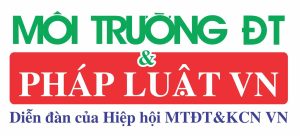
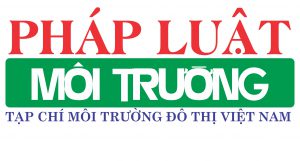

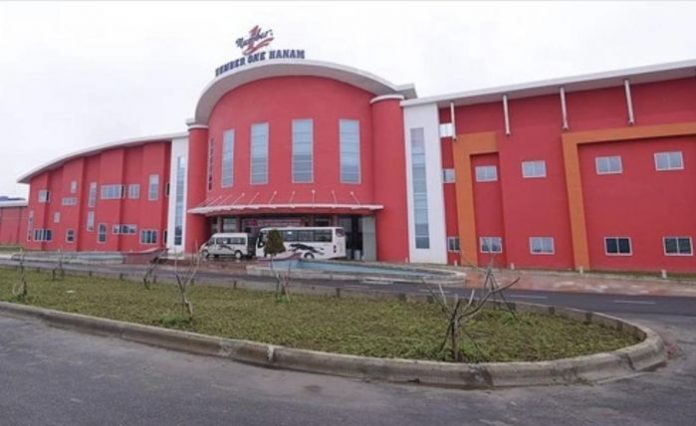

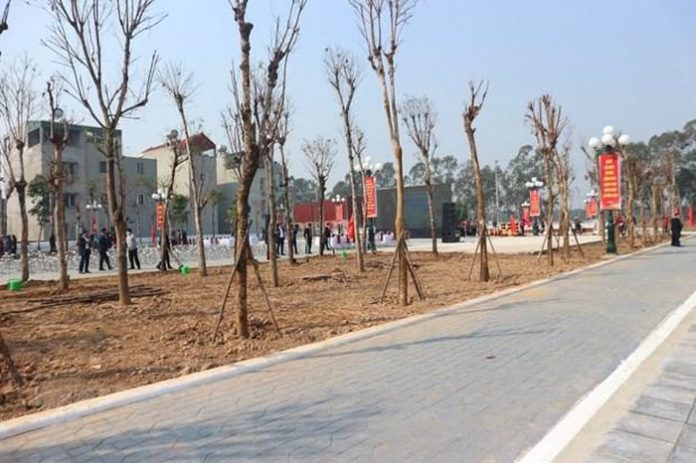

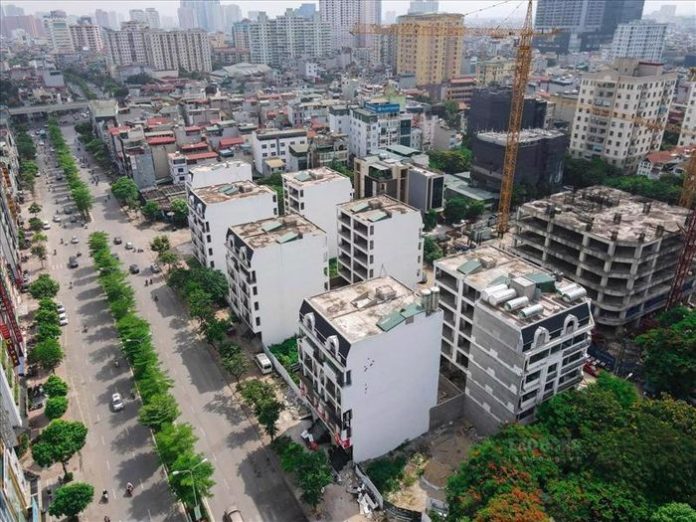
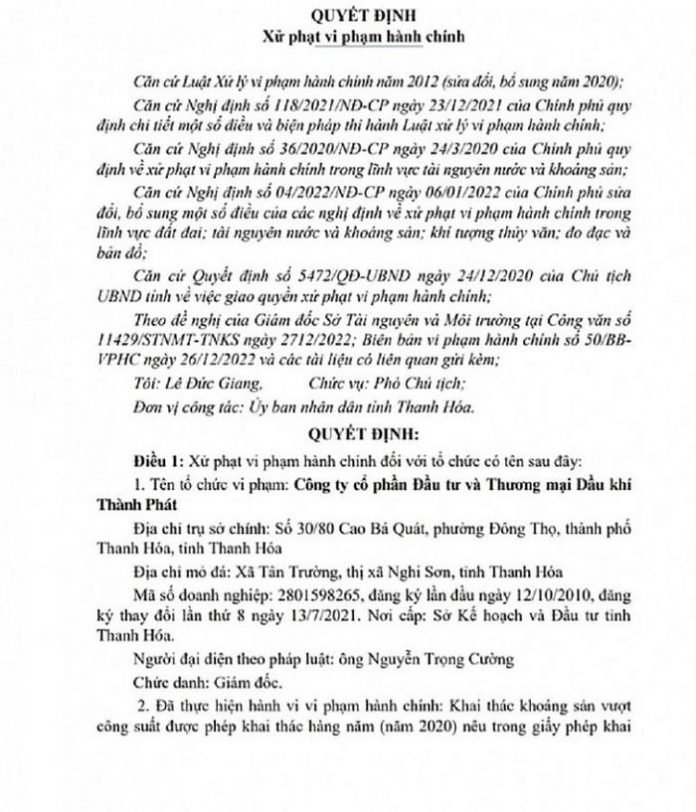
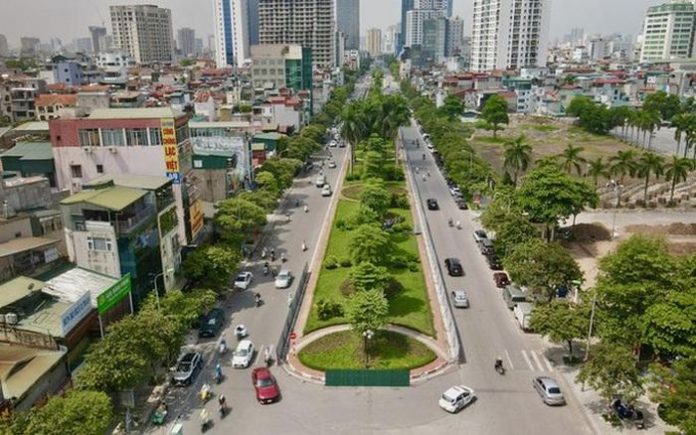









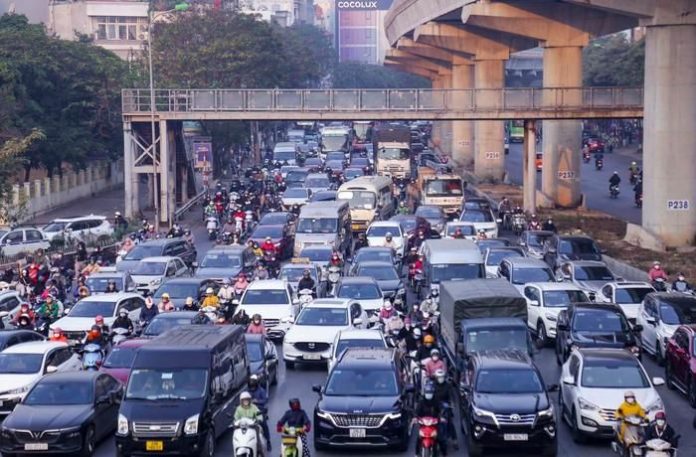
















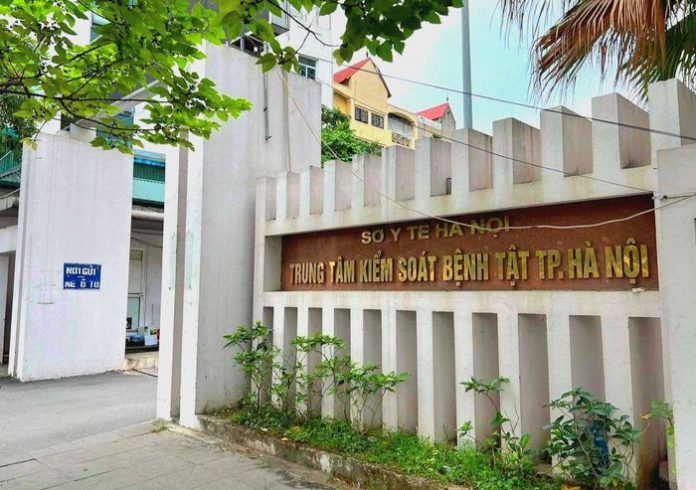

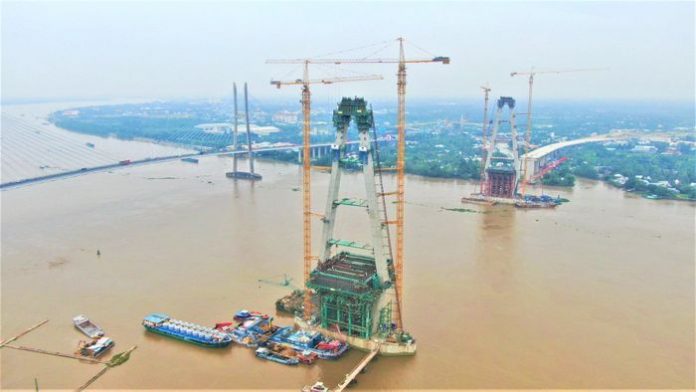


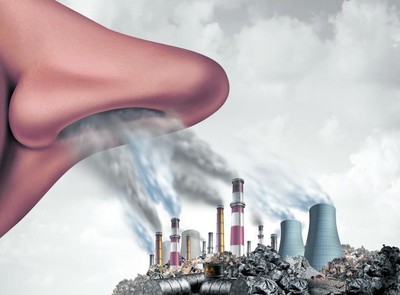
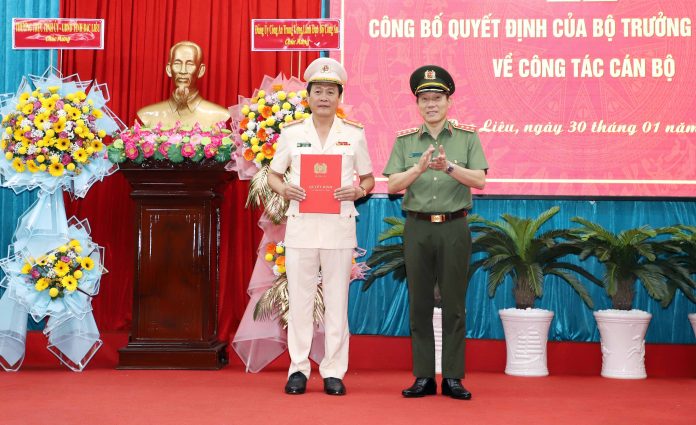
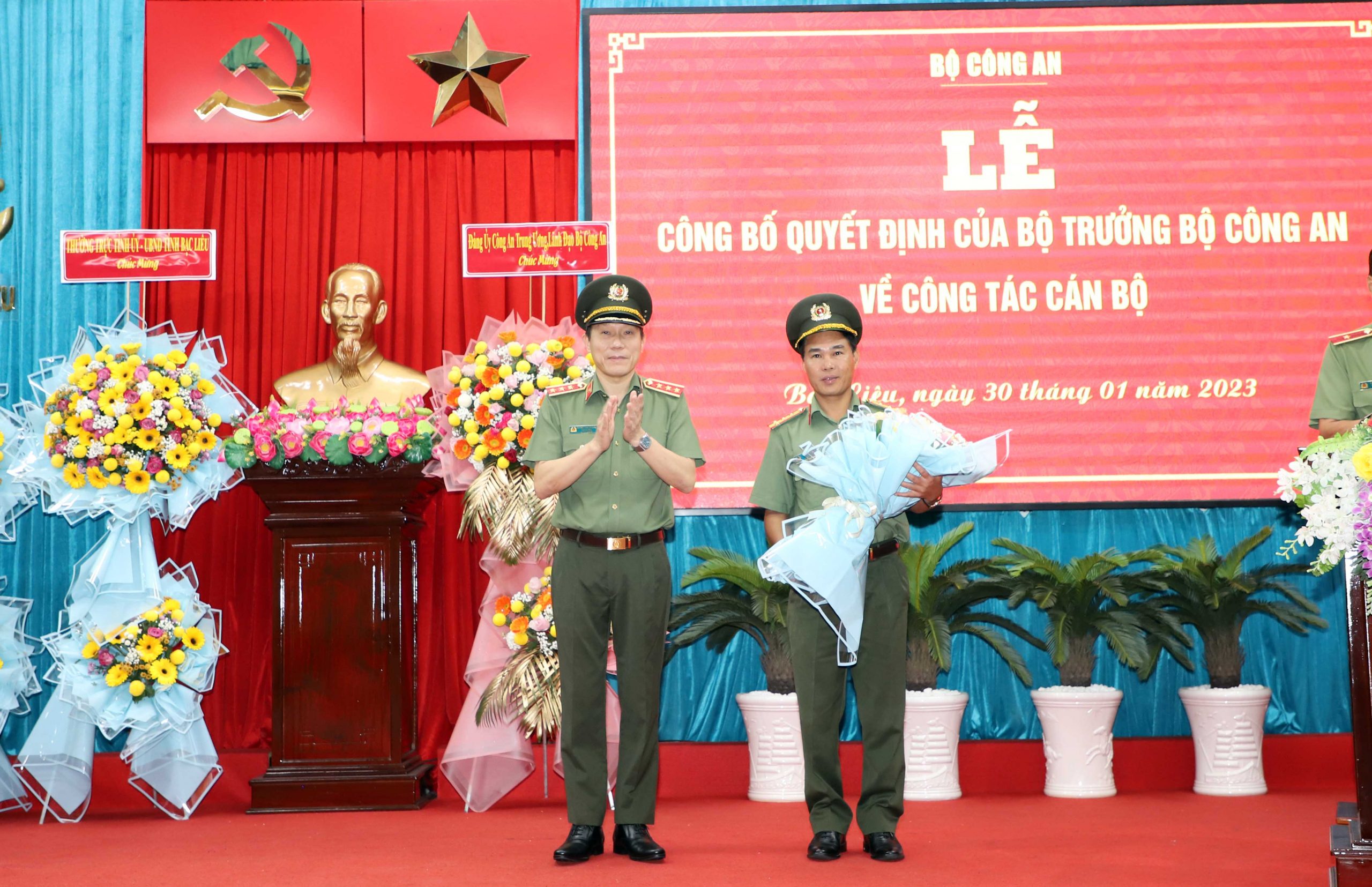
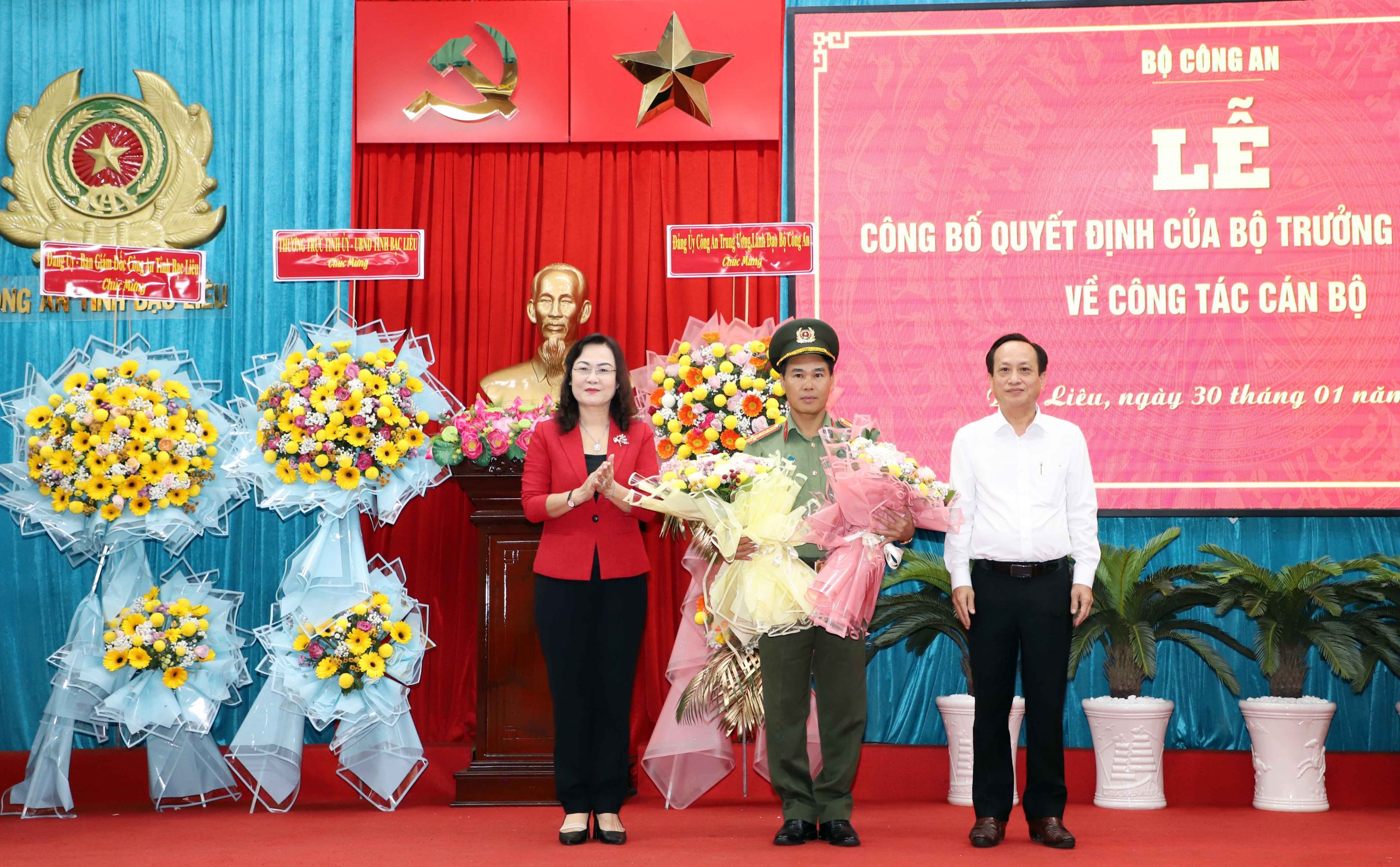 Lãnh đạo Tỉnh ủy – UBND tỉnh Bạc Liêu tặng hoa chúc mừng Đại tá Lê Việt Thắng.
Lãnh đạo Tỉnh ủy – UBND tỉnh Bạc Liêu tặng hoa chúc mừng Đại tá Lê Việt Thắng.